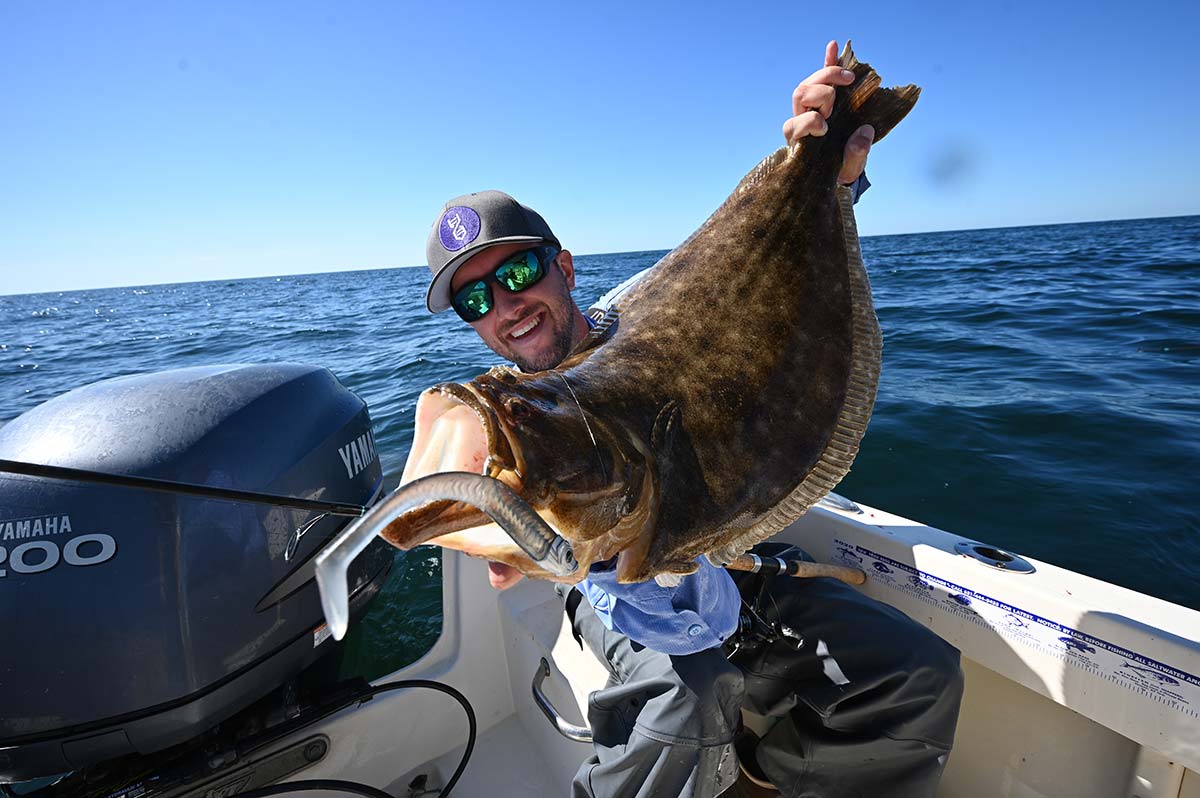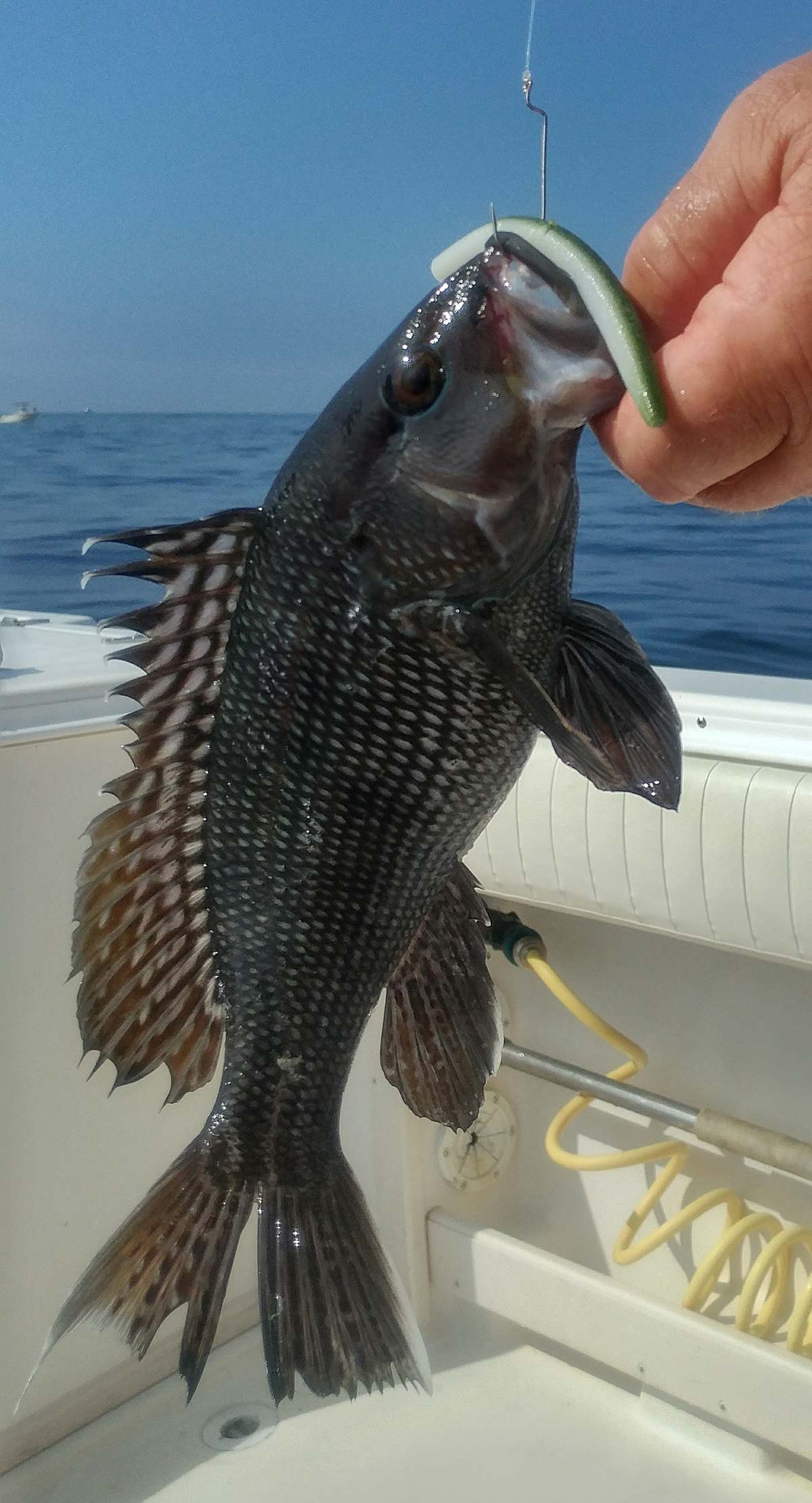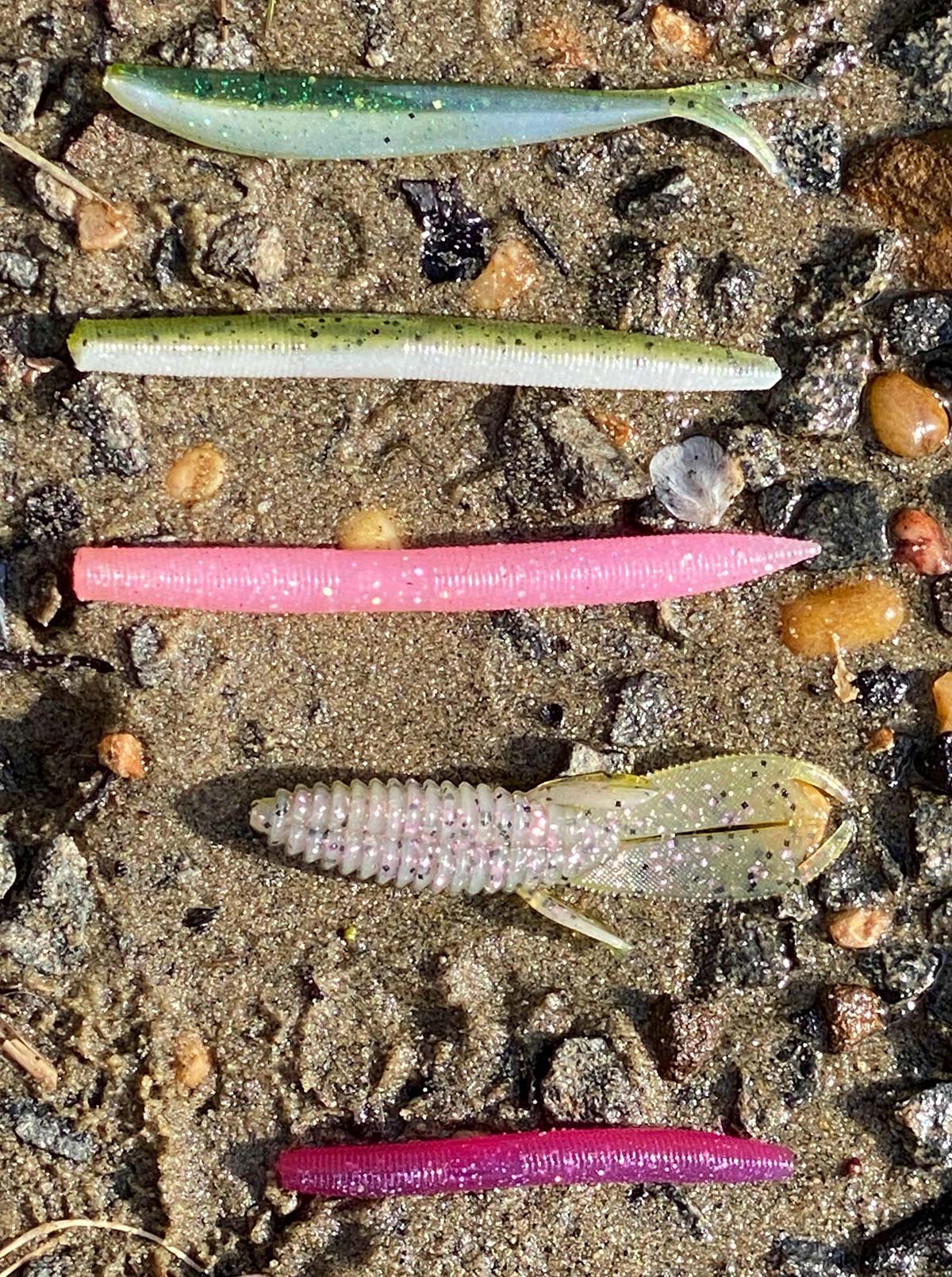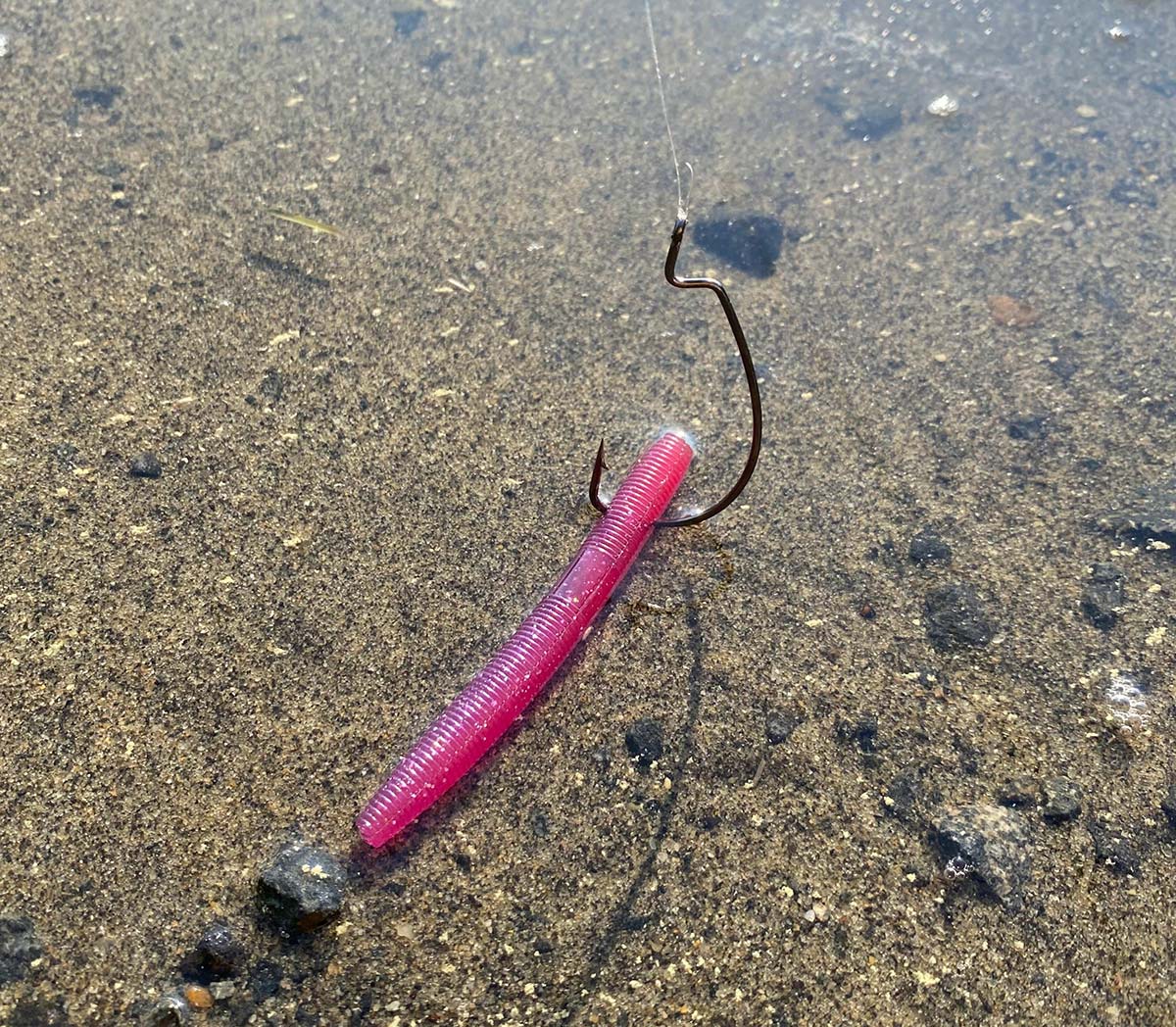
The bass world continues to provide unique new offerings for light tackle fluking.
Freshwater bass fishing has produced a nearly endless supply of soft plastic shapes and colors in sizes from massive to minute. Saltwater anglers can benefit from this explosion of designs by presenting these foreign options to saltwater species. Fluke, black sea bass, and even stripers will happily strike the same offerings that are used to catch largemouth bass in freshwater.
While the focus here is primarily on tactics for fluke, just remember that other species can and will be enticed into striking by vertically jigging freshwater soft plastics.
Tough Predators, Soft Baits
Fluke are aggressive ambush predators that often strike with great strength and speed. Over the last several years, anglers have tapped into this tendency by moving away from exclusively fishing the old standbys like live killies and strip baits, crossing over to vertical jigging. Vertical jigging with soft plastic presentations has exploded in popularity with good reason; while baits like Berkley Gulp or Fishbites Fight Club are very productive, many freshwater baits are the right size and feature the kind of action that draws aggressive attention from fluke.

When fluke hunt, they typically settle into the bottom and look up toward the surface. Their anatomy – body shape and eye placement – are a testament to the way they hunt and feed. One disclaimer: natural baits such as live killies and squid strip presentations have always and will always catch fish, there’s no disputing that. But drifting natural baits, means those baits need to come in close contact with the stationary fluke. The fish can’t strike what it can’t see. If a fluke is in ambush mode, remember that it is looking up; natural baits that are dragging along the bottom often do not attract nearly as much attention as vertically jigged presentations that wiggle and undulate within a foot of the bottom.
For an awesome look at how fluke feed and how they react to “drifted” natural baits versus vertically jigged soft plastic lures, check out the “John Skinner Fishing” YouTube Channel. John posts a wealth of high quality underwater footage of fluke in action that has changed many angling perspectives on fluke fishing.
Fluke are notorious for grabbing onto the very end of long strip baits and holding on for some time before the hook gets close enough for a hookset. Knowing when to set the hook, while flatties are chewing away, can be a challenge. This angler (admittedly) never became very good at it, despite all of my time and best efforts. Switching to vertical jigging radically increased my strike to hookup ratio. Fluke that strike vertically-jigged soft plastics often slam baits with a vengeance. They don’t just grab a piece of the offering, but I’ve found a majority of time they engulf it completely. There’s something about the hypnotic undulations of a soft plastic as it swims a few feet off the bottom that really brings out the fury in fluke.
A Vertical Fluke Rig
The way I’m vertical jigging involves presenting fish with an offering that is suspended off of the bottom, usually at a height of 1 to 3 feet. The business end starts with a Spro Prime Bucktail of the appropriate weight for the conditions, the really critical part is that the jig must be heavy enough to make vertical contact with the bottom. I typically use white, chartreuse, pink or bright green, but you can use whatever color you like. Any rod and reel combination that is suitable for fluke and sea bass fishing will work well, and I keep the rigging simple: 20-pound braid connected to a three-way swivel with a 10-inch section of fluorocarbon tied to a 1/0 Gamakatsu hook (offset shank, extra wide gap, or hybrid style hooks will work equally well). To complete the rig, tie on a 1- to 3-foot section of fluorocarbon to the last remaining eye of the swivel and tie the jig to the other end. The line length depends on the depth at which you want to suspend your soft plastic offering. Don’t be afraid to experiment with different depths throughout the course of a fishing trip.

Hook placement on the soft plastic bait itself is critical. Forget about Texas style or any hook placement that is meant to look natural in the freshwater side. Erratic movements in jerk shads for example can help draw more attention to your bait; as such, I begin with hooking the soft plastic at its top center. Experiment with other hook placement locations, such as toward the back or front end or even a third of the way from the middle on either side.
Vertically jigging with soft plastics requires a pretty consistent bouncing of the rod. Don’t make large, high swings; rod strokes of 6 to 12 inches will do the trick. Keep the rod tip moving constantly at an even and consistent cadence. I’ve experimented with all different types of bouncing actions – faster, slower, long high sweeps of the rod tip and tiny little bumps up and down. A steady, unending rhythm of 6- to 12-inch upward twitches of the rod tip has consistently drawn the most strikes. Three to five raises of the rod tip per second is not too fast, think like you’re trying to make it dart enticingly over the bottom.
Crossover Patterns
Fluke and sea bass will readily strike several soft plastic patterns that are typically used in freshwater. Think largemouth bass patterns when determining what might work well. Senko style worms between 4 and 6 inches can work very well. A strong standby in saltwater is a two-toned Senko-style worm colored with watermelon sparkle on the top and white on the bottom. Senko-style worms are very effective at matching the hatch when sand eels are present. Yum Dinger and Bass Pro Shops Stik-O soft plastics are my standbys.
Take a look at the forage inside the belly of your catch one day to figure out proper baits to use the next; and pay attention to what your fish may be spitting up. If you see 4-inch sand eels, try a 4-inch Dinger or Stik-O in a color that matches. If there are other forage species, try to match those. Flukes (the soft plastic pattern, not the fish!) very nicely (and generically) imitate several species of baitfish, such as spearing and mullet. Zoom’s “The Fluke” in Baby Bass color is a fantastic baitfish imitation that attracts plenty of attention from predatory fish – ask any weakfish sharpie!

What size to use? Let the fish determine that for you – as you experiment with different sizes during a trip, what size are the fish striking? What size is the forage in fish’s bellies? It’s no secret that fluke and sea bass will be very happily feed on shellfish such as small lobsters. Bass Pro Shop’s “River Bug” soft plastic pattern is a great imitation. Finally, don’t hesitate to present patterns that look nothing like saltwater creatures, such as lizards, salamanders, and various other creatures that come in soft plastic form.
Experiment; a trip to any fishing tackle retailer with a robust offering of freshwater soft plastic offerings is a great place to start. Don’t forget the Gulp and the Fishbites Fight Clubs of course; but don’t be afraid to think outside the box a little either!




